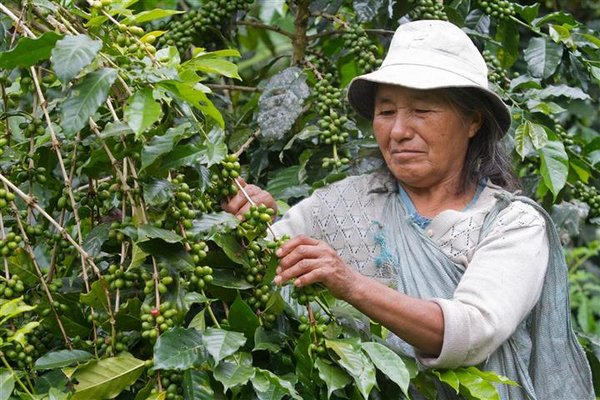 Read this article in French
Read this article in French- Share this article
- Subscribe to our newsletter
Independent evaluation of SDC – countering climate change
An independent evaluation focused on the question of how well the Swiss Agency for Development and Cooperation (SDC) addresses climate change in its programmes and projects
Switzerland’s response to climate change is along international practices, firstly through interventions aiming at reducing emissions (mitigation), and secondly, through interventions strengthening the ability to adjust to and to cope with changes (adaptation).
From 2017 to 2020, Switzerland spent around 3,139 billion Swiss francs per year on official development assistance (ODA). Out of those, around 356 million Swiss francs per year was spent on activities in relation to tackle climate change, that is about 11 per cent. For the SDC, the proportion is also around 11 per cent, or about 239 million Swiss francs, for climate change and 2,128 billion Swiss francs for ODA. Within SDC’s project portfolio, the focus is on adaptation projects. They account for around 60 per cent of climate change project expenditures.
Leave no one behind
The Sustainable Development Goals (SDGs) of the United Nations stipulate Leaving no one behind (LNOB) as its “central, transformative promise”. SDC’s long-standing priority has been reducing poverty and supporting the poorest and most vulnerable persons. These priorities are well aligned with the SDGs. The evaluation found that climate change projects of SDC frequently work with local communities and use a nature-based solutions approach. Projects are embedded well in their respective contexts. Many of these projects address climate change, poverty and biodiversity in an integrated way.
The evaluation hence confirms that in general, SDC’s climate change projects are contributing to leaving no one behind. It has however concluded that a substantial part of projects does not adequately identify and monitor the full range of benefits they induce. It recommends that SDC pay more attention to the identification and screening of benefits. Achieving multiple benefits with a single project enhances the value for money of the funds spent.
Example 1: SDC’s BioCultura programme in Bolivia
The Andes are rich in resources, but Bolivians living on the high plateaus and in the adjacent valleys are very poor. The BioCultura programme, a joint initiative of the SDC and the Bolivian government, focuses on the economic and cultural promotion of Bolivia's indigenous and farming populations. The programme concentrates on measures for preparing and adapting to climate change.
Transformative potential
The evaluation also examined the question whether SDC’s climate change projects induce changes well beyond the project scope. This is called the transformative potential. The evaluation has determined that the transformative potential of the SDC’s projects on climate change adaptation is high. That of mitigation projects is moderate. As mentioned above, some projects do not identify all benefits. Because of this, the transformative potential is higher than so far reported by the SDC.
Example 2: SDC’s Green Gold and Animal Health project in Mongolia
Mongolia's nomadic families are at the heart of this story. 70% of their country, which is 38 times larger than Switzerland, is covered in grassland – known as Mongolia's green gold. Grasslands act as an important carbon sink, storing roughly one third of the global carbon stocks on land. The SDC's Green Gold and Animal Health project, which aims to protect these pastures, has been implemented together with nomadic families and other stakeholders for 17 years. Sustainability and digital solutions are important aspects of the project.
Improving SDC’s response to climate change
The evaluation recommends that the SDC improve its management of explicit and implicit knowledge and its capacity to handle thematic complexity. The biophysical conditions are deteriorating at all levels. The evaluation considers that anticipating and preparing for new expectations and pressures that may come to the SDC is an important task at strategic level. In response to the evaluation, the senior management of the SDC defines measures. These are recorded in the Senior Management Response, which is included in the evaluation report. For example, SDC has recently begun to measure benefits more systematically and has therefore established a digital tool to track outcomes for all projects.
(SDC/wi)
More information:
Independent Evaluation of SDC’s Engagement in Climate Change Adaptation and Mitigation 2015-2020





Add a comment
Comments :